 Scott Brown retired from his landscape design career and is now pursuing other interests. But one thing is certain, his legacy and influence in the landscape design industry will not be forgotten. Despite hanging up his boots back in 2012, Scott continues to receive project requests from all over the world. Literally a celebrity in the landscape design industry, he has been interviewed and featured in more than a hundred articles and books. His work is being used by educational institutions that teach landscape design. And today we got the rare chance of interviewing Scott Brown. So without further ado…
Scott Brown retired from his landscape design career and is now pursuing other interests. But one thing is certain, his legacy and influence in the landscape design industry will not be forgotten. Despite hanging up his boots back in 2012, Scott continues to receive project requests from all over the world. Literally a celebrity in the landscape design industry, he has been interviewed and featured in more than a hundred articles and books. His work is being used by educational institutions that teach landscape design. And today we got the rare chance of interviewing Scott Brown. So without further ado…
To be recognised as one of Australia’s 25 Most Influential Landscape Designers is very humbling. But more important to me than this, are the long-lasting relationships and trust that have been established and continue today […] These relationships […] are relevant to me as a person regardless of what I or they happen to be doing now and in the future. That connection, that true rapport and respect is not something that can be bought or artificially created.
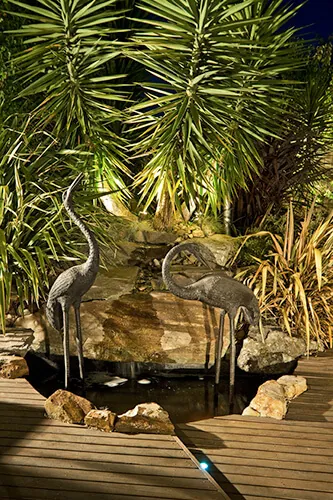 1. You’ve certainly made your mark in the landscape design industry in Australia. What do you think was your biggest contribution to the landscape design industry in Australia?
1. You’ve certainly made your mark in the landscape design industry in Australia. What do you think was your biggest contribution to the landscape design industry in Australia?
I managed to change the way in which people (home owners) think of their domestic outdoor environment. Instead of their backyard/front yard/courtyard being thought of as a separate entity to their home interior (i.e. an after-thought), I promoted the idea of their outdoor environment being ‘part’ of their home, an extension of their interior environment… the outdoor room(s) of their home. As this new way of thinking took hold, the motivation to incorporate the planning of their outdoor environment within the planning of their actual home was increased… and the importance of landscape/garden design being incorporated with the planning of the home was launched for the first time on a broad scale in the early 1990’s in Australia. Now of course, this way of thinking is more prevalent – but my contribution was to envisage the concept, initiate this, advocate and influence others such that it then became more prevalent in Australian home owner’s awareness.
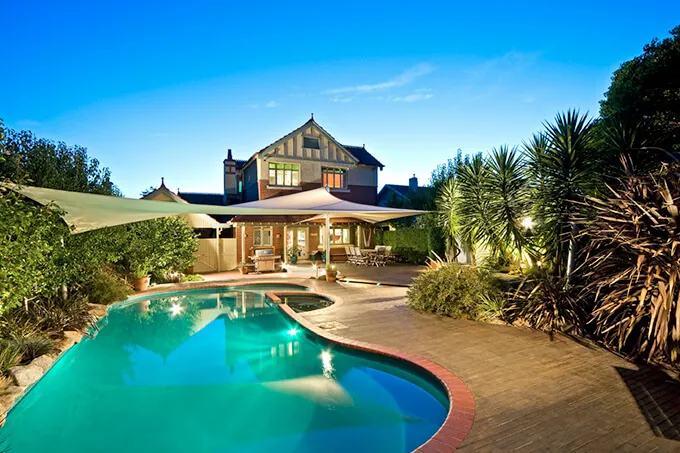
This hybrid design is a perfect example of the outdoor environment being a part of the home.
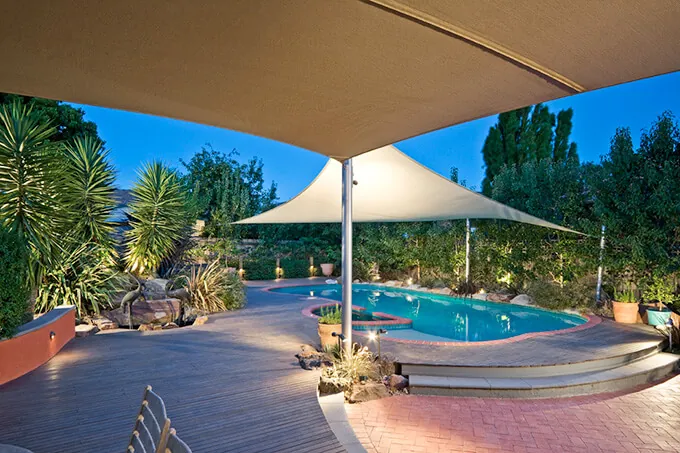
2. Of the more than 600 projects you have worked on, which one would you consider your favourite or pet project?
Great question, but a very difficult one to answer. My design legacy is one in which each and every project created a ‘sense of place’ in which all elements look and feel as if they truly belong together (House and garden). As a result, a wide range of styles, sizes, and ‘feel’ is represented in my body of work – almost as if the designer is anonymous, as opposed to imposing a signature style on every project. I have many favourites for very individual and different reasons.
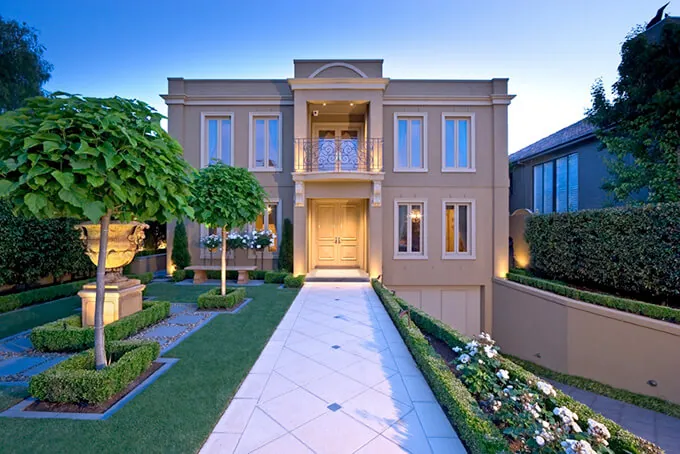
This classic garden design by Scott Brown complements the traditional architecture wherein all design elements truly belong together.
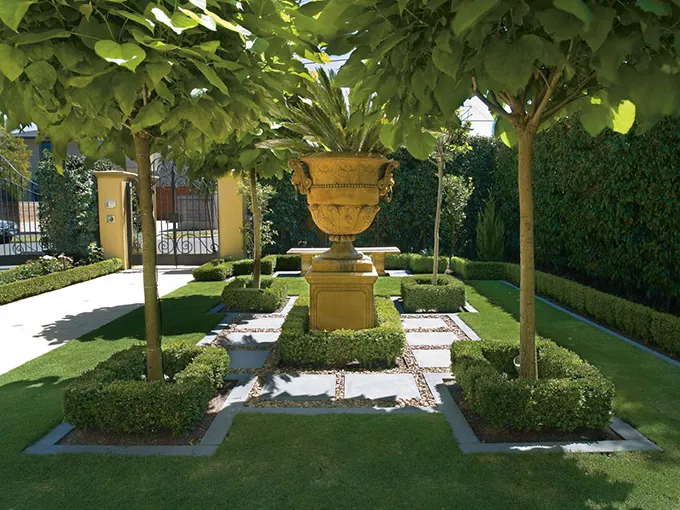
3. You mentioned that you are pursuing another career. Can you tell us more about this career change? What’s the next big thing for Scott Brown?
Prior to Landscape design, I had a career in the Resources Industry – as an exploration geologist and then a Mining executive. Since exiting SBLD, I have discovered a real passion for business. I have also recognised my natural ability to operate in commercial environments of almost any sector – applying my personal and professional attributes to lead, influence and have great impact, be accountable, be strategic, develop relationships that matter, improve and empower others to be part of the team. These ‘transferable’ skills and attributes played a major role in my success in building a professional practice in landscape/garden design… but at the time I attributed my success solely to my ability/talent as a designer. My journey since then to that of an entrepreneur, business leader and business builder in multiple businesses has enabled me to see a bigger picture.
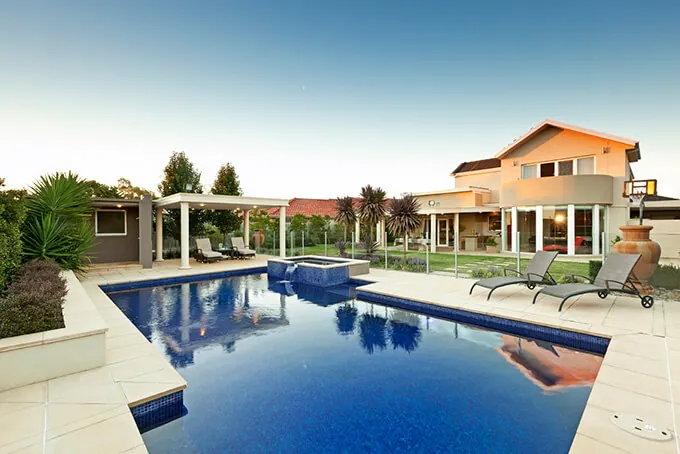
The clients Joe and Silvana were delighted with this project. They said: “I still remember Scott drew our dog into the first design. I think Scott understood what we wanted from our first meeting and didn’t take too long at all to have it drawn out for us. What we imagined our backyard was going to look like was exactly how it turned out in the end.”
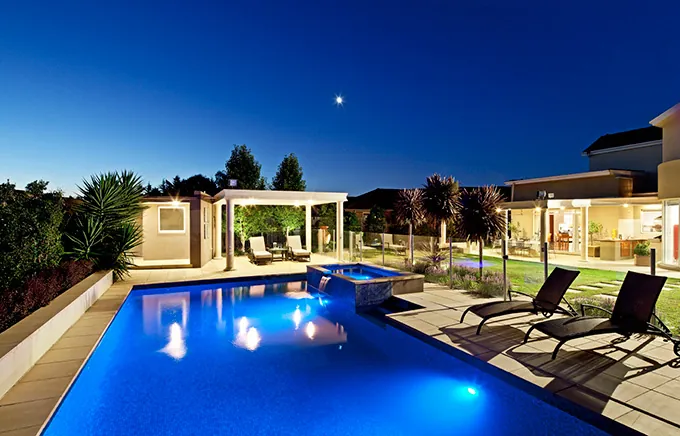
4. What led you to decide to leave the landscape design industry?
I observed changes in the market whereby quality was increasingly being devalued in the face of price. Whilst I developed strategies to manage this trend – and these strategies were proving successful in terms of revenue and business growth, the fun and emotional engagement I had experienced from the beginning started to dissipate. I believe life is too short to devote your heart beats to something you are not totally drawn to do. “Do something you love and you’ll never work another day in your life” (Can’t remember who this quote this belongs to, but it’s a good one). So, as this became true for me, I decided to explore alternative directions.
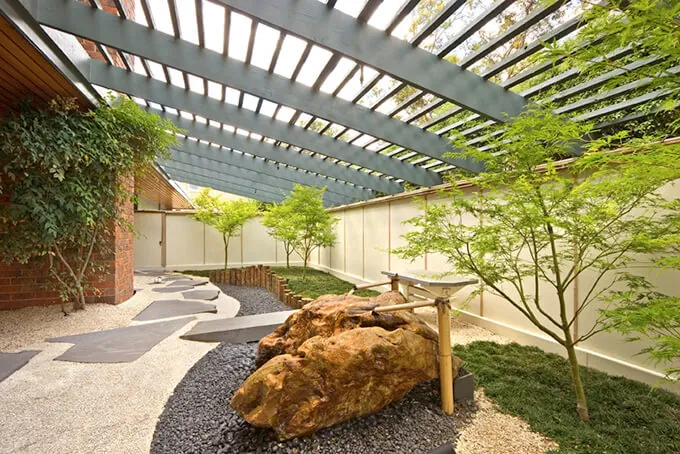
Scott Brown created this amazing Japanese-themed design. The design makes use of natural lighting and is easy on the eyes.
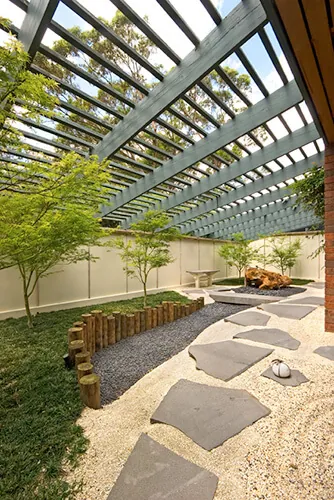
5. Can you tell us more about your medals at the Melbourne International Flower and Garden Show? What designs did you create to achieve these medals?
The journey started at the inaugural MIFGS in 1996. I designed and project managed an exhibit for a major upmarket paver manufacturer (Urban stone) – new to Melbourne. They had proposed a ‘display stand’ with boards displaying all of their products. I convinced them to allow me to design an inner-city courtyard – using only three of their products and one of their colours – which showcased in the minds of the public how their product could be used to create an entire outdoor room that people could really identify with and envisage in their own home. The stand won two medals, but perhaps more importantly for the paver company, directly contributed to 300% growth in sales over the next 12 months.
Later that year, I entered an international competition to secure an exhibit site for the 1997 show, as well as grant money for construction costs. I won the worldwide competition with a design proposal for a semi-formal, rural cottage garden when the universal trend at the time was standard roses and box hedging. At the show, this entry won five medals and awards – including one which was awarded on countback- after the show was over! The international judge – Julian Dowe – approached me and asked if I would be interested in bringing this garden display to the Chelsea Flower Show the following year. This was more than 8 years before any other Australian entry to Chelsea. Jane Edmondson was conducting ‘show tours’ that year- and each day she started her tour at my stand and we talked at great length about the difference in style of my stand.
I also designed another courtyard for the same paver company (96) for the 97 show – which also won awards. Two stands at the same show (97) was a daunting and draining experience – but a thoroughly rewarding one as well. I did not feel compelled nor motivated to exhibit again as I had learnt a great deal about myself as a person as well as a designer, and my brand was sufficiently established to grow and develop independently of the show – i.e. completely on my terms.
6. You’ve been in the industry for 19 years. How would you describe those 19 years?
I have seen significant change across this time. Initially, the concept of garden design (as opposed to just landscaping), was a largely foreign concept to most Australians. It took a lot of time and energy to educate the public through magazine articles, radio appearances, and public speaking engagements (prior to the internet) to create a market and an appetite for garden design. Initially, there was a predominant philosophy that associated design almost exclusively with the hard landscape only, and that plant selection (soft Landscape) was merely about plant knowledge- and so plant selection was more about selecting plants according to their cultural requirements (full sun, dry shade etc.) as opposed to selecting plants from an aesthetic design perspective – and also ensuring their cultural synergy. This gradually changed as a result of increasing awareness brought about by exposure, education, advocacy and increased awareness of the public motivated in creating a fulfilling home outdoor environment.
Many trends came and went – in terms of design styles – traditional, Mediterranean, Asian, modern minimalist and through this an appreciation for timelessness design emerged – motivated by the fact that the investment in a garden was more protected as the garden style would be less likely to ‘date’. Bringing the indoors outside, and the outside in became a big theme – where the benefits of linking the inside and outdoor environments became gained recognition. Then outdoor entertaining became more prevalent. The Australian market for barbeques, for example went from 20 choices to more than 600. Then came the era of reality TV makeover shows. This raised the profile of Landscape/garden design massively. But it also artificially raised the public’s expectations in terms of the real costs and the time involved. It has also lead to the importance of and time needed for planning to be underestimated by the general population. This lead to a common gap between people’s budget and their expectations in terms of eventual project outcomes. But this occurs in most aspirational aspects of our lives in general.
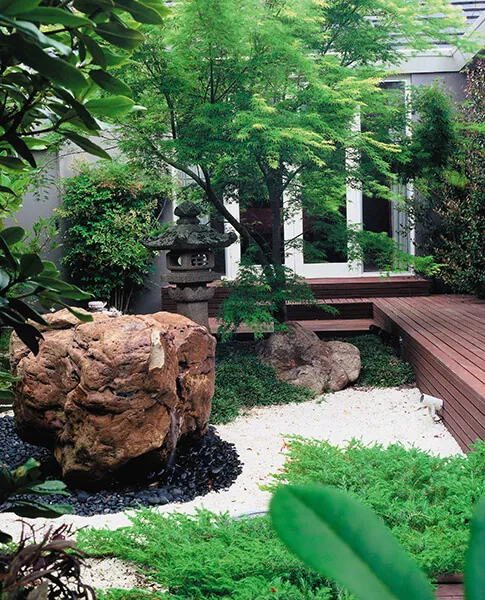
Scott Brown adopts a relaxing Asian inspired design in this home.

7. What’s the best advice you can give someone looking to start a career in landscape design?
It has been a while since I left this world and although I am still approached regularly to design and consult here in Australia and oversees – I am not across all the options open to someone embarking on this journey today. I am aware that the pathways available now are far more obvious and prepared than in my day. I had no pathway… I had to invent and create my own from scratch.
One thing I would emphasise is that to truly be a good designer, one should have a good understanding of what it takes to actually build a landscape/garden. Too many designers tend to have an academic knowledge without really understanding what is involved in making it actually happen. So access to construction by gaining work experience on site is very valuable – so that a designer knows the implications of what they put on paper – both in terms of logistics and costs. Not everyone will be as dedicated (or insane) as I was – and actually go and complete an entire landscape apprenticeship to learn construction in order to be a better designer – but any level of construction understanding will be of benefit. I am proud to say that I won apprentice of the year in each and every year of my apprenticeship. And that led to better relationships with contractors who built my designs and it also led to better relationships with my clients because I was able to ensure realistic expectations were actualised in terms of budgets and aspirations from the initial conversations right through to delivery of the finished project, and through the following years a garden would take to fully grow and develop.
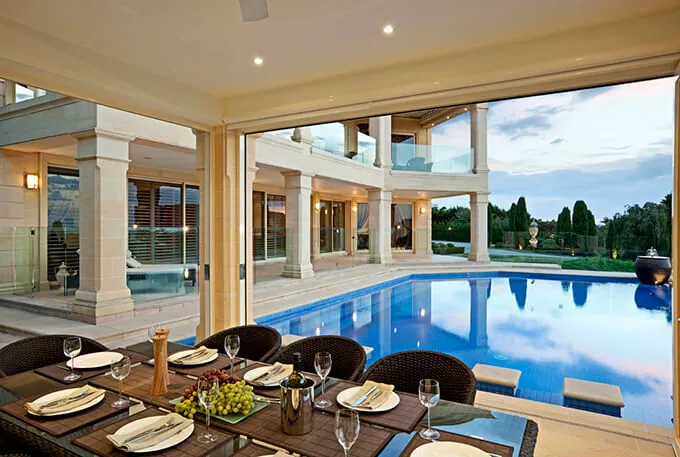
Faultless design – Scott Brown created this amazing outdoor Al Fresco dining space overlooking the garden and even catching a view of Port Philip Bay.
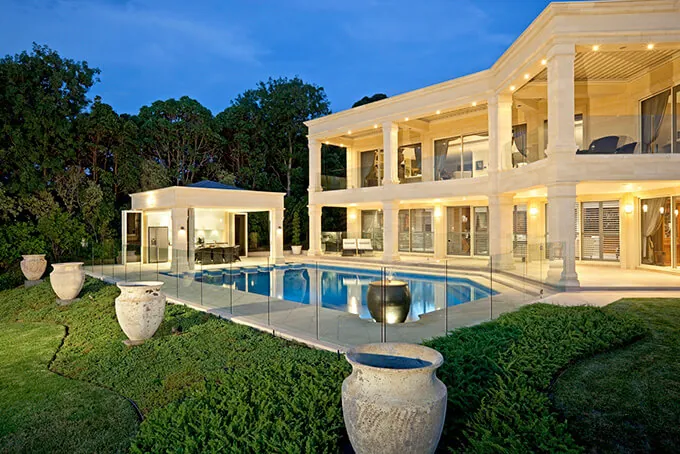
8. We’re always interested in seeing a landscape designer’s yard. Did you design your own yard when you were still a practicing landscape designer? Do you still do it now?
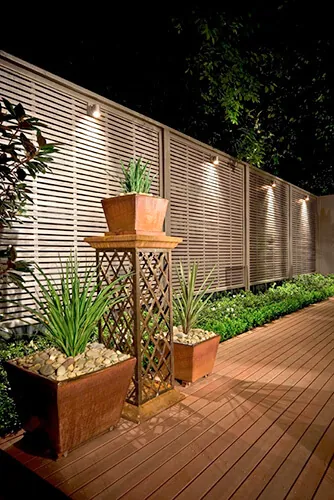 This is really funny. For many years my wife would refer to an infamous TV ad where a wife sitting amongst an unfinished house with dripping taps etc. laments that she is actually married to an architect! My wife was actually referring to the complete lack of interest I showed in our home outdoor environment for many years. But, when we moved into a new town house, I unexpectedly became enthused about the rear courtyard and its’ potential to add to the living experience and extend the home and our enjoyment of it. So I designed our courtyard for entertaining and also to enhance our indoor living by virtue of the views during the day and night all rear round. This courtyard has received publication exposure and recognition around the world. Universities in Europe and Asia have studied it as part of their course curriculum. And yet it is a very simple project – or at least it looks very simple… and that is the magic. I have continued to design our outdoor environments ever since. I can’t help myself.
This is really funny. For many years my wife would refer to an infamous TV ad where a wife sitting amongst an unfinished house with dripping taps etc. laments that she is actually married to an architect! My wife was actually referring to the complete lack of interest I showed in our home outdoor environment for many years. But, when we moved into a new town house, I unexpectedly became enthused about the rear courtyard and its’ potential to add to the living experience and extend the home and our enjoyment of it. So I designed our courtyard for entertaining and also to enhance our indoor living by virtue of the views during the day and night all rear round. This courtyard has received publication exposure and recognition around the world. Universities in Europe and Asia have studied it as part of their course curriculum. And yet it is a very simple project – or at least it looks very simple… and that is the magic. I have continued to design our outdoor environments ever since. I can’t help myself.
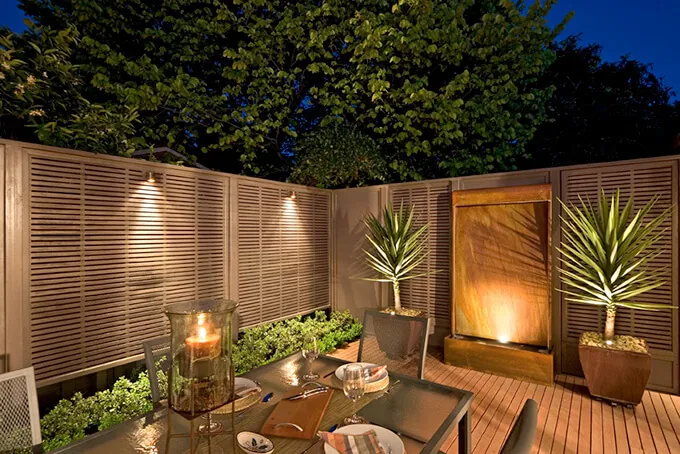
Scott remarked: “When we moved into a new town house, I unexpectedly became enthused about the rear courtyard and its’ potential to add to the living experience and extend the home and our enjoyment of it.”
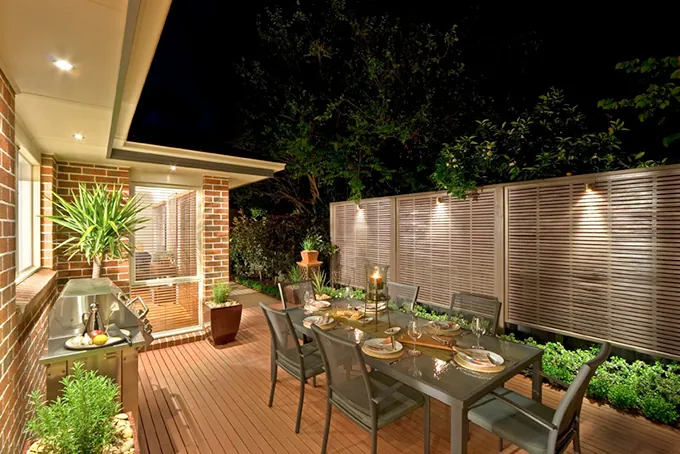
The result, as you can see, is a stunning design.
9. What was your biggest accomplishment for Scott Brown Landscape Design?
To be recognised as one of Australia’s 25 Most Influential Landscape Designers is very humbling. But more important to me than this, are the long-lasting relationships and trust that have been established and continue today between myself, and my clients and also stakeholders such as magazine editors, technical experts and product manufacturers. These relationships have surpassed my career in Landscape Design and are relevant to me as a person regardless of what I or they happen to be doing now and in the future. That connection, that true rapport and respect is not something that can be bought or artificially created.
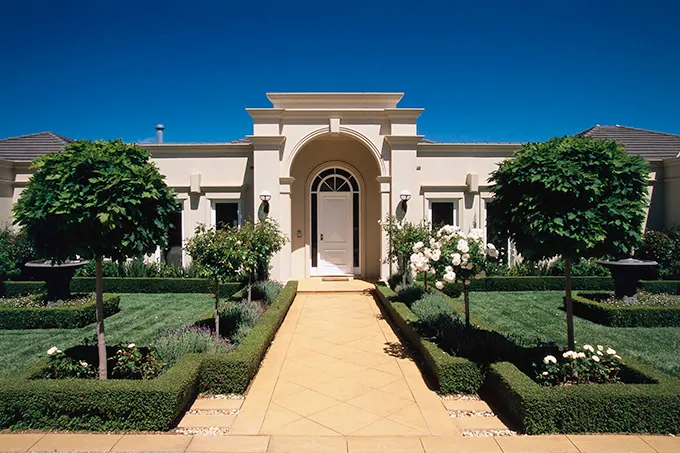
This home in Melbourne east by Scott Brown showcases a harmonious color spectrum which complements the elegant home design.
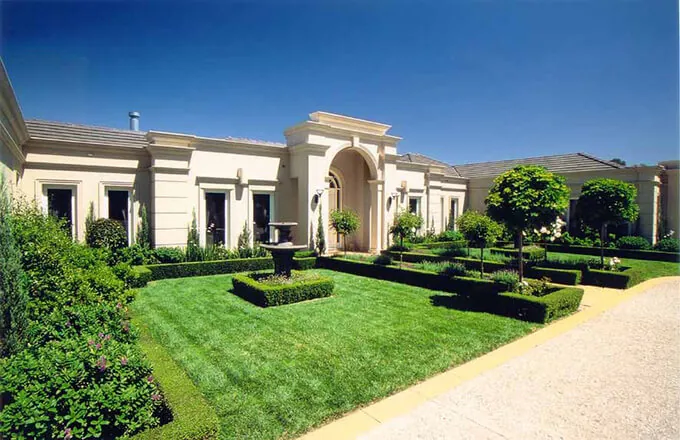
10. What were your favourite materials and plants to work with when you were still designing landscapes? Are you in favour of using exotic plants or do you always go with native plants?
The last drought in Australia had a significant impact on the industry at large. It also offered an opportunity for learning. I learnt that we can combine native and exotic planting if we are careful and understand their differing cultural requirements. I also learnt that we tended to over water anyway – as a matter of insurance for our financial investment in our gardens. I learnt how hardy some exotic plants actually are (such as the crepe myrtle for example – Lagerstroemia Indica). I learnt the importance of soil and garden bed preparation in terms of moisture conservation. I also learnt that lawns are not always necessary for the sake of it – or at least large lawns. Our parents had lawn without thinking about why or how much lawn they needed. But now we start to get into detail… and I better get off my soap box.



0 Comments